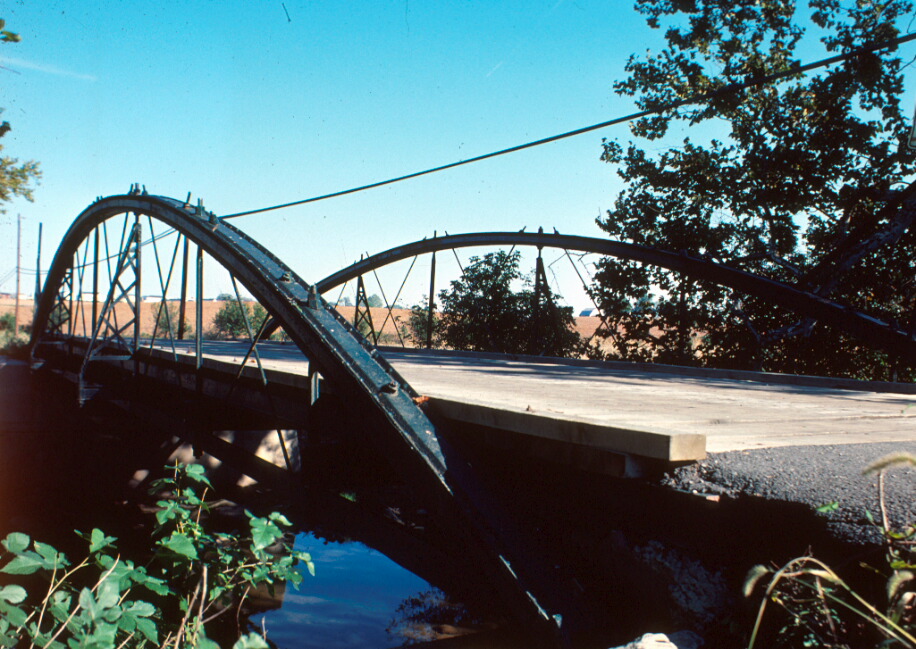
Photo credit:
Cherilyn E. Widell, 09/1977
|
Crum Road Bridge
Inventory No.:
F-8-2
Date Listed:
12/28/1978
Location:
Crum Road over Israel Creek , Walkersville, Frederick County
Category:
Structure
Period/Date of Construction:
c. 1875
Architect/Builder:
Builder: King Iron Bridge Co., Cleveland, OH
|
|
Description:
The Crum Road Bridge spanned Israel Creek southeast of Walkersville. The bridge is an iron bowstring pony truss bridge in a single span of 62' in length and 15.8' in width. It was built c. 1875, probably by the King Iron Bridge Company of Cleveland, Ohio. The structure was set on two replacement reinforced concrete abutments. The bridge is almost identical to the Detour Bridge, which was moved from its location across the Monocacy River to Catoctin Mountain National Park to be used as a foot bridge. The Crum Road bridge is one of only a few iron bow string bridges still in existence in Frederick County. The Crum Road Bridge differs from the National Register-listed Bennies Hill Road Bridge in size and construction of its members. Both are tied arches with diagonals serving as bracing and verticals supporting the deck, however, the Crum Road Bridge is smaller in size than Bennies Hill Road Bridge. The Crum Road Bridge has been disassembled and is awaiting reconstruction in a County-owned park.
|
Significance:
The original patent for the bowstring arch truss bridge was first registered in 1840 and was a popular structure until the late 19th century. However, the Crum Road Bridge may be an example of Zenas King's patented Tubular Arch Bridge, a very popular design of the King Iron Bridge and Manufacturing Company, who probably constructed this bridge in the 1870s. There are some 30 iron truss bridges still in existence in Frederick County. But with increasing development in the area many of these will have to be destroyed because of additional tonnage requirements demanded of highway structures. Since iron truss bridges portray an important step in bridge engineering design, it is imperative that some examples such as the Crum Road Bridge remain in the American landscape.
|
|